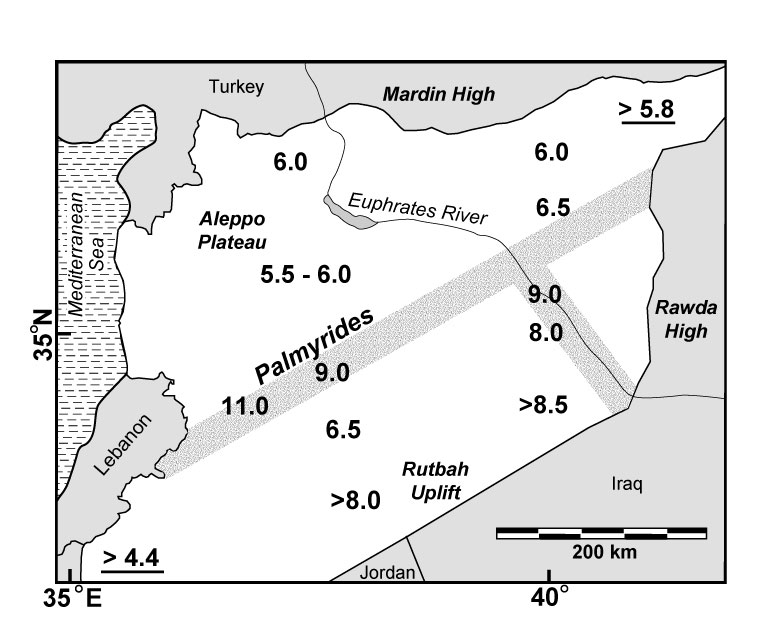Home |
Publications
Brew, G. E., Litak, R. K., Seber,
D., Barazangi, M., Sawaf, T., and Al-Imam, A.
Basement depth and sedimentary velocity structure in the northern Arabian
platform, Eastern Syria
Geophysical Journal International, 128, 617-631, 1997.
Abstract
Basement depth in the Arabian plate beneath
eastern Syria is found to be much deeper than previously supposed. Deep-seated
faulting in the Euphrates graben system is also documented. Data from a detailed,
300 km long, reversed refraction profile, with offsets up to 54 km, are analyzed
and interpreted, yielding a velocity model for the upper ~ 9 km of continental
crust. The interpretation integrates the refraction data with seismic reflection
profiles, well logs and potential field data, such that the results are consistent
with all available information. A model of sedimentary thicknesses and seismic
velocities throughout the region is established. Basement depth on the north side
of the Euphrates is interpreted to be around 6 km, whilst south of the Euphrates
basement depth is at least 8.5 km. Consequently, the potentially hydrocarbon-rich
pre-Mesozoic section is shown, in places, to be at least 7 km thick. The dramatic
difference in basement depth on adjacent sides of the Euphrates graben system
might suggest that the Euphrates is a suture zone, possibly inherited from Late
Proterozoic accretion of the Arabian plate. Gravity modeling across the southeast
Euphrates system tends to support this hypothesis. Incorporation of previous results
allows us to speculate on the position of possible suture zones in Syria.
Click
here to view a PDF of the post-print
Copyright Statement
Geophysical
Journal International
Publisher: Blackwell Publishing on behalf of The Royal Astronomical Society
and The Deutsche Geophysikalische Gesellschaft
Edited by: C.J. Ebinger (Managing Editor)
Print ISSN: 0956-540X
Online ISSN: 1365-246X
Key Figures and Captions
Figure 10: Map showing basement depths in Syria in kilometers below
surface. Results from this study and previous refraction interpretation of Seber
et al. (1993). Underlined data points are from selected deep well data. Shading
represents locations of possible suture / shear zones.

Home
| Publications

